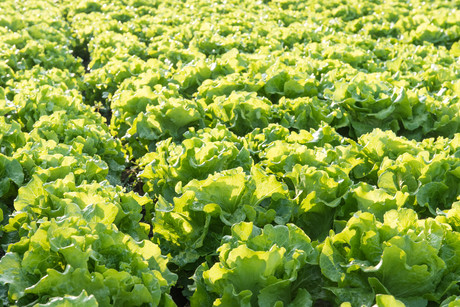Cattle, canals and E. coli

The outbreak of E. coli associated with romaine lettuce earlier this year may have been caused by a cattle feeding operation close to a canal, according to the US Food and Drug Administration’s recent hypothesis.
Starting in the first week of April, a severe outbreak of E. coli O157:H7 illnesses affected 210 people from 36 states, resulting in 96 hospitalisations and 5 deaths.
Continuous investigations by the Centers for Disease Control and Prevention (CDC), FDA and other public health and regulatory officials have found the outbreak was linked to romaine lettuce from the Yuma growing region. Samples of canal water taken by the CDC tested positive for the outbreak strain, and the FDA is looking into how this bacteria may have entered the water and how it came into contact with the lettuce.
“The traceback investigation indicates that the illnesses associated with this outbreak cannot be explained by a single grower, harvester, processor or distributor,” the FDA said.
It is examining the possibility that contamination occurred at any point along the growing, harvesting, packaging and distribution chain.
In early August, the agency shared its hypotheses at a Leafy Greens Food Safety Task Force meeting that was set up in response to the outbreak. The FDA said a possible explanation was contaminated water coming into contact with produce through direct irrigation or other means.
“FDA notes that the canal is close to a Concentrated Animal Feeding Operation (CAFO), a facility with a large number of cattle on the premises. The CAFO can hold in excess of 100,000 head of cattle at any one time and the FDA traceback information showed a clustering of romaine lettuce farms nearby,” it reported.
The agency is looking at the links between the CAFO and the adjacent water, as well as other factors that may explain the contamination.
There should be no further risk of contamination as the last shipments of Yuma romaine lettuce were harvested on 16 April, and the CDC said the outbreak appeared to have ended by 28 June 2018. This was the largest outbreak in the United States in over 10 years, and the FDA is committed to finding the source to prevent it from occurring again in the future. It will be releasing its findings in an environmental assessment report.
In-house ginger processing for beverage maker
A ginger beer manufacturer reduces its supply risk by investing in pack-house technology to...
Tailor-made solutions for sliced meat on show at IFFA
At this year's IFFA in Frankfurt, the MULTIVAC Group will be showing its latest line...
Five ways emerging tech can help food and beverage manufacturers
As food manufacturers embrace new innovations, they must also navigate the complex landscape of...














